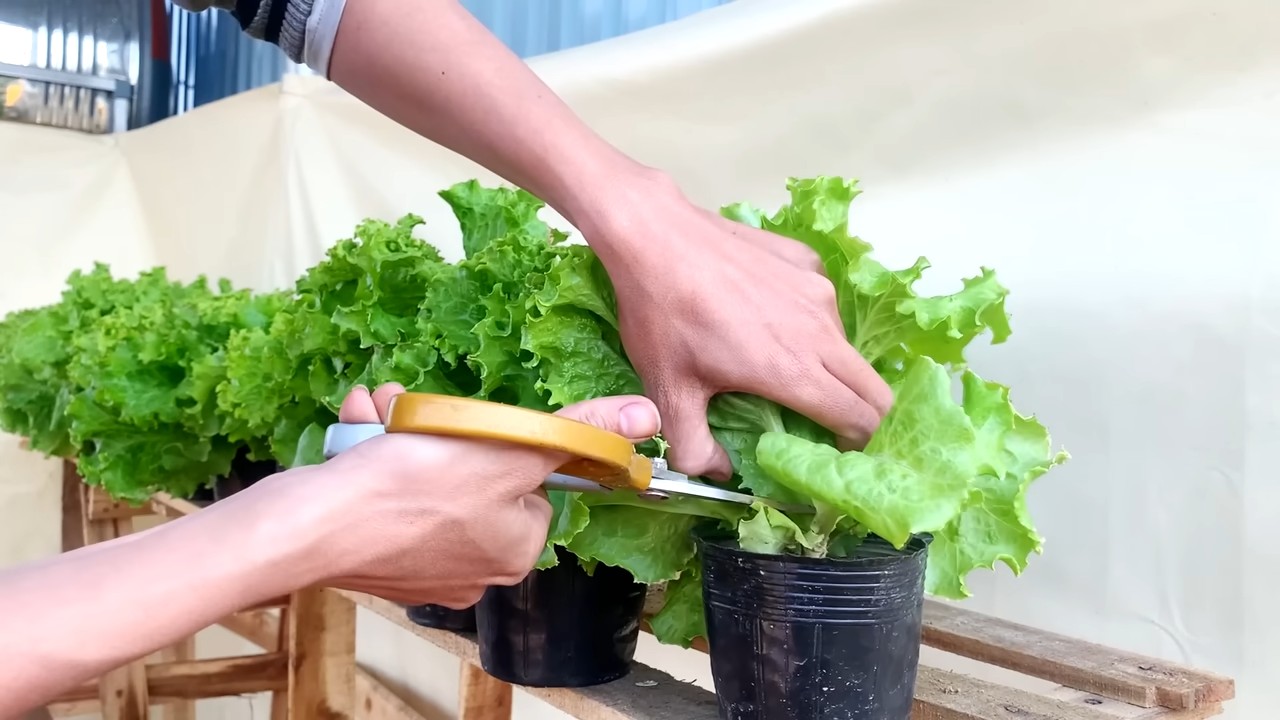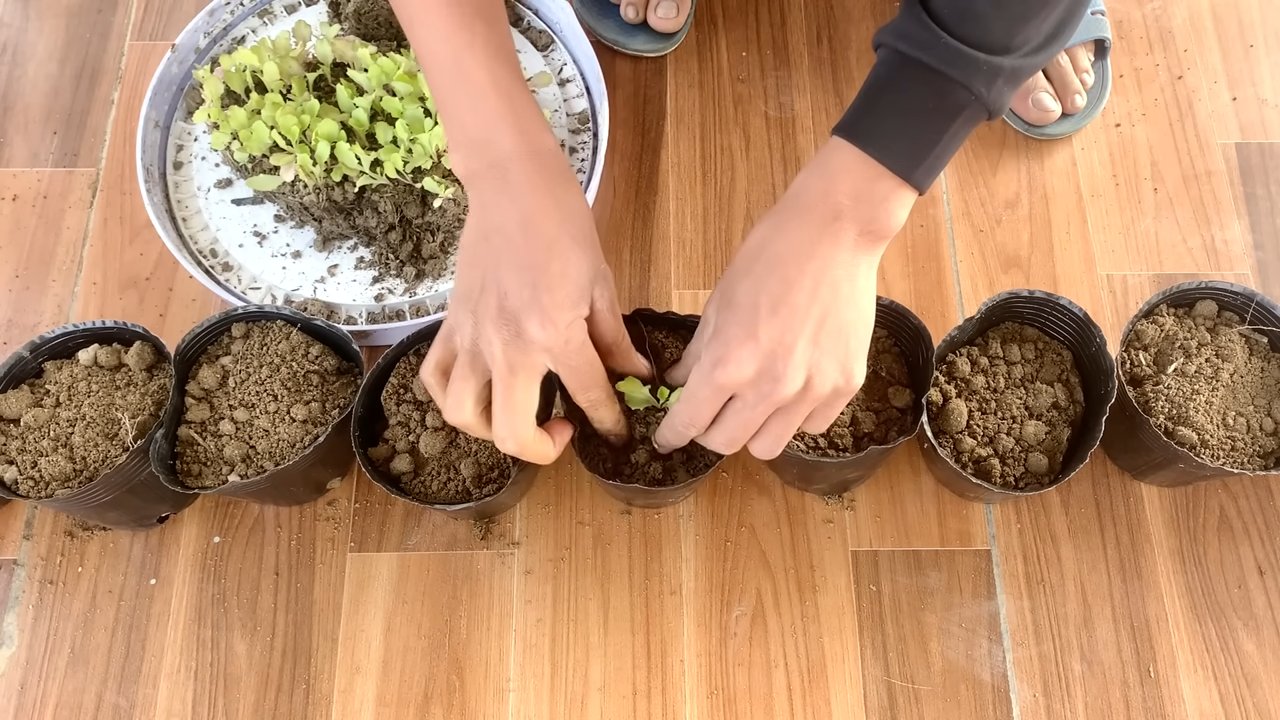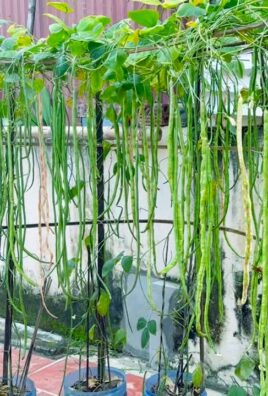Growing Lettuce Indoors can seem like a daunting task, conjuring images of complex hydroponic systems and grow lights that cost a fortune. But what if I told you that fresh, crisp lettuce could be harvested from your very own kitchen counter, without breaking the bank or requiring a degree in botany?
For centuries, humans have cultivated leafy greens, with lettuce tracing its roots back to ancient Egypt, where it was initially grown for its oil-rich seeds. Over time, it evolved into the delicious salad staple we know and love. But access to fresh, locally grown produce isn’t always easy, especially during colder months or in urban environments. That’s where the magic of indoor gardening comes in!
This DIY guide is your passport to a year-round supply of vibrant, healthy lettuce. Imagine the satisfaction of snipping off leaves for a lunchtime salad, knowing exactly where they came from and that they’re free from harmful pesticides. We’ll explore simple, effective techniques for growing lettuce indoors, using readily available materials and minimal space. Say goodbye to wilted, overpriced supermarket lettuce and hello to a thriving indoor garden that nourishes your body and brightens your home!

Growing Lettuce Indoors: Your DIY Guide for Fresh Enjoyment All Year Round!
Hey garden friends! Are you also tired of wilted lettuce from the supermarket? I am! That’s why today I’m showing you how to easily and simply grow your own lettuce indoors. Whether it’s winter or summer, with this DIY guide, you’ll always have fresh, crisp lettuce on hand. Let’s get started!
What You’ll Need: The Materials List
Before we get started, here’s a list of everything you’ll need for your indoor lettuce garden:
- Lettuce seeds: Choose varieties that are well-suited for indoor growing, such as loose-leaf lettuce, Romaine, or baby leaf lettuce.
- Starter pots or trays: Small containers for sowing.
- Seed-starting mix: Special soil for starting seedlings that is low in nutrients and loose.
- Larger pots or containers: For later transplanting of the lettuce plants.
- Potting soil: High-quality potting soil for the growth of the lettuce plants.
- Grow light (optional, but recommended): Very helpful, especially in winter or with low daylight.
- Spray bottle: For moistening the soil.
- Watering can: For watering the lettuce plants.
- Drainage material (e.g., expanded clay pebbles or gravel): For the bottom of the pots to prevent waterlogging.
- Saucers: To catch excess water.
- Labels and a pen: To label the lettuce varieties.
Step-by-Step Guide: From Seed to Salad
Now let’s get down to it! Here is a detailed guide on how to create your own indoor lettuce garden:
1. Sowing: The Foundation for Your Salad Garden
- Prepare the starter pots: Fill the starter pots or trays with seed-starting mix. Press the soil down lightly.
- Sow the seeds: Distribute the lettuce seeds evenly over the soil. Make sure they are not too close together, as the seedlings will otherwise compete for space.
- Cover the seeds: Cover the seeds with a thin layer of seed-starting mix.
- Moisten: Gently moisten the soil with a spray bottle. The soil should be damp, but not wet.
- Cover (optional): Cover the starter pots with plastic wrap or a clear lid to increase humidity. Be sure to ventilate regularly to prevent mold.
- Place in a warm and bright spot: Place the starter pots in a warm and bright location. A temperature of 18-22°C (64-72°F) is ideal.
2. Germination: When Life Awakens
- Be patient: Germination takes about 5-10 days, depending on the lettuce variety and temperature.
- Control moisture: Keep the soil moist but not wet during germination. Spray it with a spray bottle if necessary.
- Ventilate: If you have covered the starter pots, ventilate them regularly to prevent mold.
- Remove the cover: As soon as the first seedlings appear, remove the cover completely.
3. Caring for the Seedlings: Strong Plants for a Bountiful Harvest
- Bright light: Place the seedlings in a bright location. If you don’t have enough daylight, use a grow light.
- Water regularly: Water the seedlings regularly, but avoid waterlogging. The soil should always be slightly moist.
- Thinning (pricking out): When the seedlings are large enough (have about 2-3 true leaves), thin them out. This means transplanting the strongest seedlings into separate pots or containers.
- Fill the new pots with potting soil.
- Carefully lift the seedlings out of the starter pots.
- Place each seedling in its own pot.
- Water the seedlings after transplanting.
4. Transplanting into Larger Pots: Room to Grow
- Choosing pots: Choose pots with a diameter of at least 15 cm (6 inches).
- Drainage: Fill the bottom of the pots with a layer of drainage material (e.g., expanded clay pebbles or gravel).
- Potting soil: Fill the pots with potting soil.
- Transplanting: Carefully lift the lettuce plants out of the small pots and place them in the larger pots.
- Watering: Water the lettuce plants thoroughly after transplanting.
5. Caring for the Lettuce Plants: For a Bountiful Harvest
- Location: Place the lettuce plants in a bright and cool location. Avoid direct sunlight, as this can burn the leaves.
- Watering: Water the lettuce plants regularly, but avoid waterlogging. The soil should always be slightly moist.
- Fertilizing (optional): Fertilize the lettuce plants every 2-3 weeks with an organic liquid fertilizer.
- Ventilation: Ensure good ventilation to prevent mold.
- Pest control: Check the lettuce plants regularly for pests. If necessary, you can use natural pesticides.
6. The Harvest: Finally, Fresh Lettuce!
- Harvest time: The harvest time depends on the lettuce variety. Loose-leaf lettuce can be harvested after just a few weeks, while Romaine lettuce takes a little longer.
- Harvesting method: Pick the outer leaves of the lettuce as soon as they are large enough. This way, the lettuce can continue to grow, and you can harvest it multiple times.
- Storage: Store the harvested lettuce in the refrigerator. It keeps best if you wrap it in a damp cloth.
Additional Tips and Tricks for Your Indoor Salad Garden
- Grow light: A grow light is very helpful, especially in winter or with low daylight. It provides sufficient light and promotes the growth of the lettuce plants.
- Rotation: Rotate the pots regularly so that the lettuce plants are supplied with light evenly.
- Pests: Check the lettuce plants regularly for pests. Aphids are a common problem. You can combat them with a jet of water or with natural pesticides.
- Variety selection: Experiment with different lettuce varieties to find out which one you like best and which grows best in your indoor garden.
- Hydroponics: If you don’t want to use soil, you can also grow lettuce in hydroponics. The plants are grown in a nutrient solution.
Avoiding Common Mistakes: To Make Your Salad Garden a Success
Too little light: Lettuce needs a lot of light to grow. If you don’t have enough daylight, use a grow light.
Too much water: Waterlogging is one of the most common mistakes when growing lettuce. Make sure the soil is well-draining and only water when the soil is dry.

Conclusion
So, there you have it! Growing lettuce indoors is not only achievable, but it’s also a remarkably rewarding experience. Imagine fresh, crisp lettuce leaves available at your fingertips, regardless of the season or the weather outside. No more last-minute grocery store runs for a wilted head of lettuce. No more worrying about pesticides or questionable farming practices. Just pure, homegrown goodness gracing your salads and sandwiches.
This DIY trick is a must-try for several compelling reasons. First and foremost, it empowers you to take control of your food source. You know exactly what goes into your lettuce, from the soil it grows in to the water it receives. This translates to healthier, more nutritious greens for you and your family. Secondly, it’s incredibly cost-effective. Once you’ve invested in the initial setup – which can be surprisingly minimal – the ongoing costs are negligible compared to constantly purchasing lettuce from the store. Think of all the money you’ll save!
Beyond the practical benefits, growing lettuce indoors is also a fantastic way to connect with nature, even within the confines of your home. It’s a calming and therapeutic activity that can bring a touch of green into your living space. Watching your lettuce seedlings sprout and flourish is a truly satisfying experience.
Don’t be afraid to experiment with different varieties of lettuce. Romaine, butterhead, loose-leaf – the possibilities are endless! Each variety offers a unique flavor and texture, allowing you to customize your indoor garden to your specific preferences. You can also try succession planting, sowing new seeds every few weeks to ensure a continuous harvest. Consider adding companion plants like herbs (chives, basil) or even strawberries to your indoor garden for added diversity and flavor.
Ready to embark on your indoor lettuce-growing adventure? We encourage you to give this DIY trick a try. It’s easier than you might think, and the rewards are well worth the effort. Start small, learn as you go, and don’t be discouraged by initial setbacks. Every gardener, even the most experienced, has faced challenges along the way.
And most importantly, we want to hear about your experience! Share your successes, your failures, and any tips or tricks you discover along the way. Post photos of your thriving indoor lettuce gardens on social media using #IndoorLettuce or #DIYLettuceGarden. Let’s create a community of indoor lettuce growers and inspire others to embrace this sustainable and rewarding practice. Let’s all enjoy the benefits of fresh, homegrown lettuce, year-round!
Frequently Asked Questions (FAQ)
What type of lettuce grows best indoors?
While many lettuce varieties can be grown indoors, some tend to thrive more than others. Loose-leaf varieties like Black Seeded Simpson, Salad Bowl, and Red Sails are generally considered excellent choices for indoor growing. They mature quickly, are relatively compact, and can be harvested continuously as needed. Butterhead varieties like Buttercrunch and Tom Thumb are also popular options due to their tender leaves and manageable size. Romaine lettuce can be grown indoors as well, but it may require a bit more space and light compared to loose-leaf and butterhead varieties. Experiment with different types to see what works best for your specific growing conditions and taste preferences. Consider starting with a mix of seeds to get a feel for which varieties are easiest for you to manage.
How much light does indoor lettuce need?
Lettuce requires a significant amount of light to grow properly indoors. Ideally, it needs at least 6-8 hours of direct sunlight per day. If you don’t have a sunny windowsill that provides this much light, you’ll need to supplement with artificial grow lights. LED grow lights are a popular and energy-efficient option. Position the lights a few inches above the lettuce plants and adjust the height as they grow. Insufficient light can lead to leggy, pale lettuce that is less flavorful and more susceptible to pests and diseases. Observe your plants closely and adjust the lighting as needed to ensure they are receiving adequate light.
What kind of soil should I use for growing lettuce indoors?
The best soil for growing lettuce indoors is a well-draining potting mix that is rich in organic matter. Avoid using garden soil, as it can be too heavy and may contain pests or diseases. A good potting mix will provide adequate drainage, aeration, and nutrients for your lettuce plants. You can also amend your potting mix with compost or other organic materials to further improve its fertility. Consider using a soilless mix, such as coco coir or peat moss, for even better drainage and aeration. Regardless of the type of soil you choose, make sure it is clean and free of contaminants.
How often should I water my indoor lettuce?
Water your indoor lettuce regularly, keeping the soil consistently moist but not waterlogged. The frequency of watering will depend on factors such as the type of soil, the size of the container, and the ambient temperature and humidity. Check the soil moisture regularly by sticking your finger into the soil. If the top inch feels dry, it’s time to water. Water deeply, allowing the excess water to drain out of the bottom of the container. Avoid overwatering, as this can lead to root rot. Consider using a self-watering container or a watering can with a long spout to make watering easier and more precise.
How do I harvest my indoor lettuce?
Harvest your indoor lettuce when the leaves are large enough to eat, typically when they are 4-6 inches long. You can harvest the entire head of lettuce at once, or you can harvest individual leaves as needed. To harvest individual leaves, simply snip them off near the base of the plant, leaving the inner leaves to continue growing. This method, known as “cut and come again,” allows you to harvest lettuce continuously for several weeks. Wash the harvested lettuce leaves thoroughly before eating.
What are some common pests and diseases that affect indoor lettuce?
While growing lettuce indoors can help minimize pest and disease problems, it’s still important to be vigilant. Common pests that can affect indoor lettuce include aphids, spider mites, and whiteflies. These pests can be controlled with insecticidal soap or neem oil. Diseases such as powdery mildew and damping-off can also affect indoor lettuce. To prevent these diseases, ensure good air circulation, avoid overwatering, and use a clean potting mix. If you notice any signs of pests or diseases, take action immediately to prevent them from spreading.
Can I grow lettuce indoors year-round?
Yes, you can absolutely grow lettuce indoors year-round! One of the biggest advantages of indoor gardening is that you are not limited by the seasons. With proper lighting, temperature control, and watering, you can enjoy fresh lettuce leaves any time of the year. Consider staggering your planting schedule to ensure a continuous harvest throughout the year.
How do I prevent my indoor lettuce from bolting (going to seed)?
Bolting is a common problem with lettuce, especially in warm weather. To prevent your indoor lettuce from bolting, keep the temperature cool (ideally between 60-70°F), provide adequate shade during the hottest part of the day, and harvest the leaves regularly. Bolting is triggered by stress, so providing optimal growing conditions will help prevent it. Choose bolt-resistant varieties of lettuce for best results.
Is growing lettuce indoors organic?
Yes, growing lettuce indoors can easily be organic. By using organic potting mix, organic fertilizers, and natural pest control methods, you can ensure that your lettuce is free of synthetic chemicals. Growing your own lettuce indoors gives you complete control over the growing process, allowing you to create a truly organic and healthy food source.
What are the benefits of growing lettuce indoors?
The benefits of growing lettuce indoors are numerous. You have access to fresh, healthy lettuce year-round, regardless of the weather outside. You can save money on groceries by growing your own lettuce. You have complete control over the growing process, ensuring that your lettuce is free of pesticides and other harmful chemicals. Indoor gardening is a relaxing and rewarding hobby that can connect you with nature. And finally, growing your own lettuce indoors is a sustainable practice that reduces your carbon footprint.




Leave a Comment